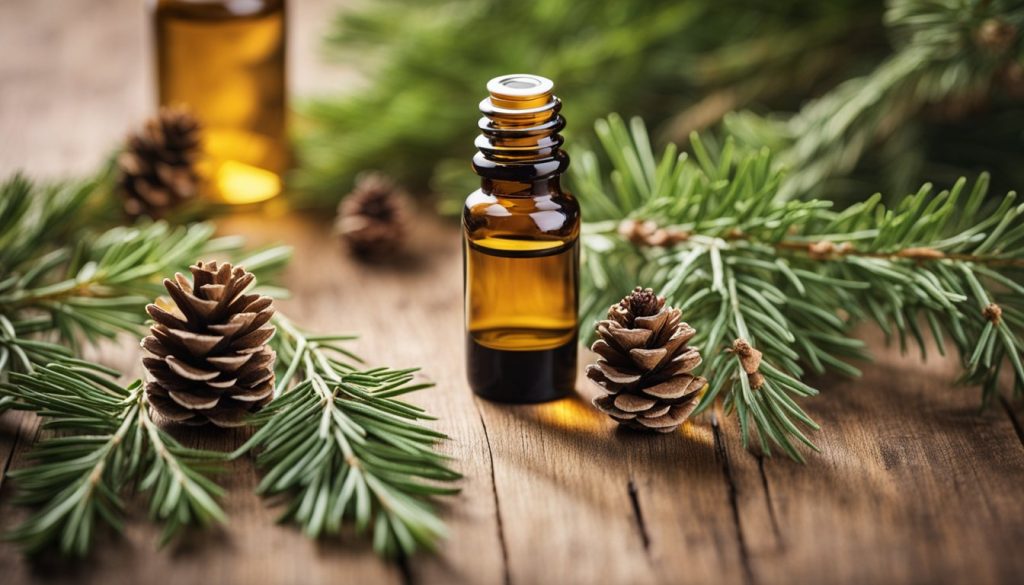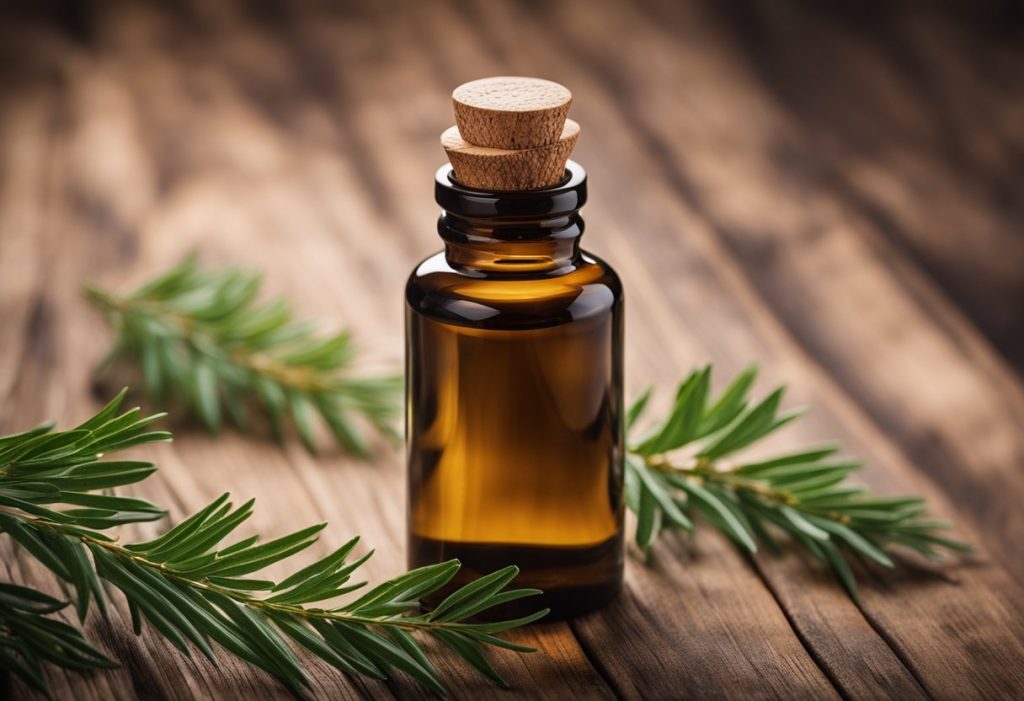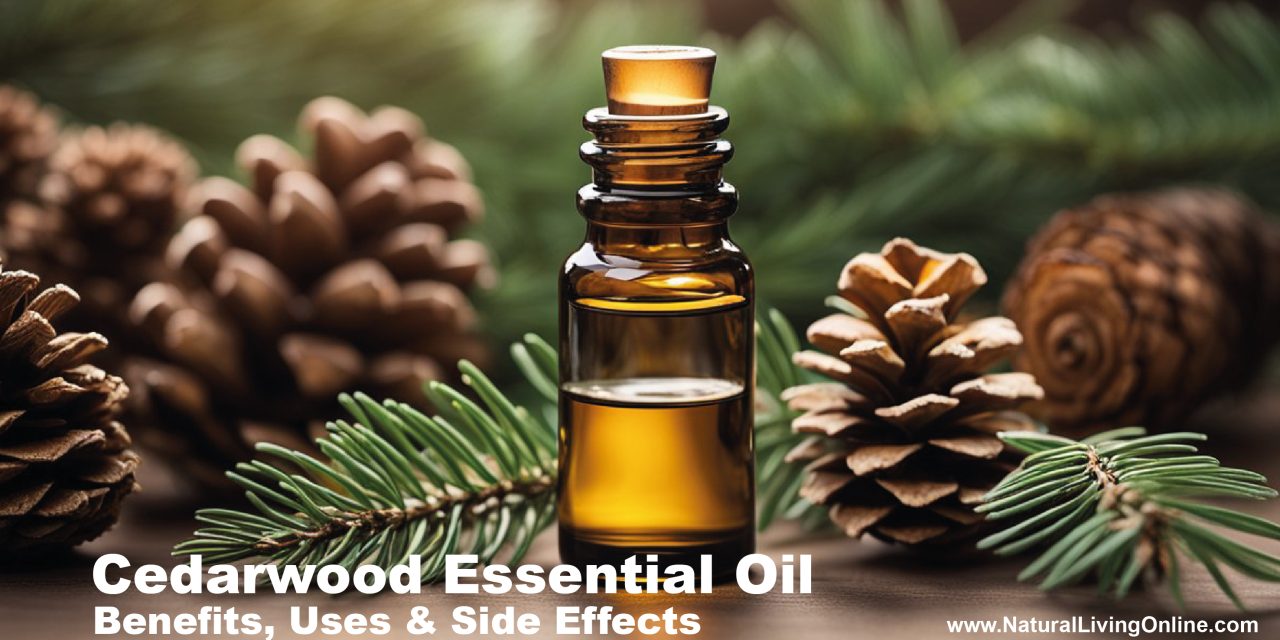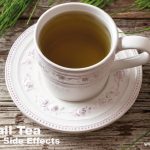Cedarwood essential oil is a concentrated aromatic liquid extracted from the wood of various types of conifers, most commonly from the trees belonging to the genus Cedrus. With a rich, woody aroma, it has been valued for centuries in various cultural traditions for its unique properties. This essential oil offers a range of benefits stemming from its natural components, which include sesquiterpenes, cedrol, and thujopsene. These components contribute to its grounding and calming effects, making cedarwood a popular choice in aromatherapy.
The versatility of cedar essential oil extends far beyond its soothing scent. It serves multiple roles, from being a key ingredient in skincare products to its use as a natural insect repellent. In traditional medicine, cedarwood oil has been used to address concerns such as inflammation, poor circulation, and stress-related conditions. However, with all its uses, it’s crucial to understand how to properly use the oil and be aware of potential side effects. When diluted and applied topically or used in aromatherapy, the oil can provide a serene and restoring experience.

Key Takeaways
- Cedarwood essential oil is derived from conifers and is celebrated for its calming and grounding aroma.
- It is used in various applications, including skincare, stress relief, and as a natural insect repellent.
- Proper usage and awareness of potential side effects are essential for the safe enjoyment of its benefits.
Origins and Characteristics
Cedar oil is derived from various types of cedar trees, each conferring a distinct aroma and set of properties. Extracted primarily through steam distillation, the oil preserves the essence of the wood’s characteristically woody aroma.
Historical Background
Cedar trees, belonging to different genera like Cedrus and Juniperus, have been revered throughout history. For example, Cedrus atlantica, the Atlas cedar, is native to the Atlas Mountains and has a rich history of use by ancient civilizations. They valued cedar for its durable, aromatic wood, and the Egyptians used the resin for embalming. The Juniperus virginiana, commonly known as the Virginia cedarwood, is celebrated for its robust and enduring wood, and is a species found in North America. Its wood has been traditionally used for creating storage chests and wardrobes, capitalizing on its aromatic qualities to repel insects.
Botanical Profile
Cedar Trees: Broadly referring to both true cedars (Cedrus) and plants like the Virginia cedar (Juniperus virginiana), these coniferous trees are known for their longevity and hardy wood. True cedars, like the Cedrus atlantica, are native to the Atlas Mountains and have needle-like leaves.
- Virginian Cedarwood (Juniperus virginiana):
- Location: Eastern North America
- Characteristics: Dense, slow-growing tree with juniper-like foliage
- Aroma: Distinct, woody with a warm undertone
- Atlas Cedarwood (Cedrus atlantica):
- Location: Atlas Mountains in Morocco and Algeria
- Characteristics: Tall tree with pyramid-shaped canopy; bluish-green needles
- Aroma: Sweet, woody, with a hint of balsamic
Both types of cedar trees are harvested for their wood, which is rich in oils that contribute to cedarwood’s signature aroma—a combination of earthy, balsamic, and woody notes. The oil retains this characteristic scent, making it a favored ingredient in perfumery and aromatherapy.
Essential Oil Profile

Botanical Name: Cedrus spp. (Different species yield different types of cedarwood oil, including Cedrus atlantica, Cedrus deodara, and Cedrus libani.)
Common Names: Cedarwood
Plant Family: Pinaceae (Pine family)
Countries of Origin: Cedarwood trees are native to various regions around the world, including the Atlas Mountains of North Africa (Cedrus atlantica), the Himalayas (Cedrus deodara), and the Mediterranean region (Cedrus libani).
Extraction Method: Cedarwood essential oil is typically extracted through steam distillation of the wood, specifically the heartwood.
Parts Used: Wood
Essential Oil Smell: Cedarwood essential oil has a warm, woody aroma with sweet and balsamic undertones. It is often described as earthy, grounding, and reminiscent of the scent of cedarwood furniture or cedar chests.
Essential Oil Color: Pale yellow to amber.
Viscosity: Medium
Perfumery Note: Base Note
Strength of Aroma: Medium to Strong
Blends Well With
- Citrus oils like bergamot and lemon
- Floral oils such as lavender and jasmine
- Spicy oils like cinnamon and clove
- Herbal oils like rosemary and chamomile
Therapeutic Properties
- Sedative
- Antiseptic
- Anti-inflammatory
- Antifungal
- Insect repellent
- Astringent
Uses
- Aromatherapy: Cedarwood oil is used in aromatherapy to promote relaxation, reduce stress and anxiety, and enhance mental clarity and focus. Its grounding aroma is often used in meditation and mindfulness practices.
- Skincare: It’s used in skincare products for its astringent properties and ability to help balance oily skin and alleviate acne and other skin irritations.
- Haircare: Cedarwood oil is added to haircare products for its purported ability to promote hair growth, reduce dandruff, and improve scalp health.
- Insect Repellent: Cedarwood oil is a natural insect repellent and is often used in sprays, candles, and diffusers to deter mosquitoes, moths, and other pests.
Contraindications
- Cedarwood oil is generally safe for topical and aromatic use. However, it should be avoided by individuals with sensitive skin, as it may cause irritation or allergic reactions in some people.
- Pregnant and breastfeeding women should consult with a healthcare professional before using cedarwood oil.
Side Effects
- In rare cases, cedarwood oil may cause skin irritation or allergic reactions. It’s recommended to perform a patch test before using it topically.
- Direct inhalation of cedarwood oil vapor in large amounts may cause respiratory irritation or headaches in some individuals.
Types
- There are several species of cedarwood trees that produce essential oils with similar aromatic profiles, including:
- Cedrus atlantica (Atlas Cedarwood)
- Cedrus deodara (Himalayan Cedarwood)
- Cedrus libani (Lebanon Cedarwood)
Chemical Constituents with Percentages
- The chemical composition of cedarwood essential oil can vary depending on the species and geographical origin, but some of its main constituents include:
- Cedrol (30-50%)
- Alpha-cedrene (10-25%)
- Beta-cedrene (5-20%)
- Thujopsene (5-15%)
- Cedrene (2-10%)
The percentages may vary depending on factors such as the age of the tree, the part of the wood used, and the extraction method.
Therapeutic Benefits

Cedar essential oil, derived from the wood of cedar trees, exhibits a multitude of therapeutic properties. These benefits range from aromatherapy perks to skin care improvements, along with notable stress relief and sedative effects to aid sleep.
Aromatherapy Benefits
When used in aromatherapy, cedarwood essential oil imparts a warm, woodsy aroma that can help to improve respiratory health by clearing the air of unwanted toxins. Its scent is known to relax the mind and may aid in reducing the symptoms of stress.
Skin Care Advantages
For skin care, cedarwood essential oil offers antiseptic and anti-inflammatory qualities, making it beneficial for treating conditions like eczema. It contributes to skin health by regulating sebum production and reducing the occurrence of pimples.
Stress and Anxiety Relief
Cedarwood oil has a grounding, soothing aroma that can assist in alleviating stress and anxiety when inhaled, either directly or diffused into the air. It acts upon the limbic system to stabilize the mood and promote mental calmness.
Sedative Effects and Sleep Aid
As a natural sedative, cedarwood essential oil can help individuals struggling with insomnia or restless sleep patterns. Utilizing the oil through direct inhalation or in a diffuser at bedtime may facilitate a more restful and deep sleep.
Practical Uses and Applications
Cedarwood essential oil is celebrated for its versatile applications ranging from home ambiance enhancement to personal care benefits. Its medicinal properties are also leveraged for managing various health concerns.
In the Home
Cedarwood essential oil acts as a natural deodorizer, capable of imparting a refreshing scent when used in a diffuser. It is also used as an insect repellent, effectively warding off pests when a few drops are added to sprays or lotions.
- Diffuser: Add 5-10 drops to purify the air with its woodsy aroma.
- Insect Repellent: Mix with a carrier oil and apply to the skin or add to lotions.
Personal Care Regimens
Individuals often incorporate cedarwood oil into their hair care routines, as it is believed to stimulate hair growth and reduce hair loss stemming from conditions like alopecia. A few drops added to shampoo can also alleviate dandruff. Meanwhile, massaging the oil into the scalp can soothe dry scalp issues.
- Hair Growth:
- Shampoo: Mix 2-3 drops with shampoo during wash.
- Massage: Massage a diluted blend into the scalp to nourish hair roots.
- Scalp & Hair Care:
- Alopecia Treatment: Regular scalp massages may aid in treatment.
- Dandruff Control: Add to shampoos or create a DIY scalp treatment.
Medical Uses
Cedar oil is not just for aromatic and cosmetic use; it also holds medicine-related benefits. It’s known to help relieve cough and cold symptoms, and also ease congestion. Additionally, its calming properties may promote better sleep when applied to a pillow or used in lotions before bedtime.
- Respiratory Relief: Inhale the oil via steam to alleviate congestion.
- Sleep Aid: Put a drop on a pillow or mix with a lotion to encourage restfulness.
Blending and Safety Guidelines

In crafting beneficial blends with cedarwood essential oil, it is essential to understand the right combinations and dilution practices to ensure safety and effectiveness.
Oil Blending Combinations
When creating therapeutic blends, cedarwood oil is known for its versatile nature. It blends well with a variety of oils that can enhance its properties. A popular blend for relaxation combines cedarwood with lavender oil, both of which are renowned for their calming effects. For those seeking a boost in focus and concentration, blending cedarwood with rosemary and lemon can be effective. Other oils such as bergamot, cypress, and vetiver also create harmonious mixtures, offering refreshing and grounding aromas when diluted properly.
Safe Usage and Dilution
To use cedarwood essential oil safely, proper dilution with a carrier oil is crucial. A common rule of thumb is to maintain a concentration level of 2-5%, which equates to approximately 12-30 drops of essential oil per ounce of carrier oil.
- For children and sensitive skin, a 1% dilution rate is often recommended.
- Coconut oil and jojoba are excellent choices for a carrier oil due to their mild properties and compatibility with most skin types.
Incorporate specific guidelines available from sources like the Essential Oil Blending Guidelines with Dilution Chart for precise measurements. It’s important to note that some essential oils may have maximum dermal levels, thus, referring to safety books such as “Essential Oil Safety” by Robert Tisserand is advisable for detailed information on each oil’s limitations.
Potential Side Effects and Precautions
When considering the use of cedarwood essential oil, it is important to be aware of potential side effects and take appropriate precautions. While cedarwood oil is known for its beneficial properties, including the ability to potentially lower blood pressure due to compounds like cedrol, it can also cause adverse reactions in some individuals.
Side Effects:
- Skin irritation: Topical application of cedarwood oil might lead to skin sensitivity or irritation in some people, especially if the oil is not properly diluted.
- Inflammation: There is a chance of inflammatory responses, particularly in those with sensitive skin or existing skin conditions.
- Allergic reactions: As with any essential oil, allergic reactions can occur, which might include symptoms such as redness, itching, or swelling.
Precautions:
- Skin patch test: Before widespread use, it’s recommended to perform a skin patch test to check for adverse reactions.
- Dilution: Always dilute cedarwood oil with a carrier oil to mitigate the risk of skin irritation.
- Medical advice: Individuals with pre-existing health conditions or those taking medications should seek medical advice before using cedarwood oil.
- Pregnancy: Pregnant or nursing women should exercise caution and consult with a healthcare provider.
Special Considerations:
- Pets: The oil contains sesquiterpenes such as thujopsene which can be harmful to pets, particularly cats, as they can metabolize essential oils differently.
- Insects: Cedarwood oil can act as a natural deterrent for insects like ants and ticks, but use around animals should be done with caution, and it’s always best to refer to EPA guidelines regarding the use of essential oils as pesticide products.
To avoid potential side effects, users should employ cedarwood essential oil responsibly and in accordance with safety guidelines.
Frequently Asked Questions
What are the potential benefits of cedarwood essential oil for hair?
Cedarwood essential oil is recognized for promoting a healthy scalp by reducing dryness and flakiness. It is also known to potentially stimulate hair follicles and increase circulation, which might enhance hair growth and decrease hair loss.
How can cedarwood essential oil improve skin health?
The oil is credited with having antiseptic and anti-inflammatory properties, making it beneficial for skin conditions. It can help soothe irritation, combat acne-causing bacteria, and promote overall skin clarity.
What spiritual benefits are associated with cedarwood essential oil?
Historically, cedarwood essential oil has been used for spiritual grounding and purification. It is believed to promote a calming atmosphere, helping to reduce stress and enhance concentration during spiritual practices.
Are there any risks associated with inhaling cedarwood essential oil?
Generally, cedarwood essential oil is considered safe to inhale in moderation. However, overuse or inhalation by sensitive individuals can potentially lead to respiratory irritation.
What methods are recommended for the safe use of cedarwood essential oil?
Dilution with a carrier oil is recommended for topical application to minimize skin sensitivity. For aromatic use, a diffuser can disperse the oil safely into the air. Experts also advise performing a patch test before widespread use.
What are common side effects when using cedarwood essential oil?
Common side effects can include skin irritation or allergic reactions, especially if the oil is used undiluted. Always conducting a patch test and consulting a healthcare provider before use can help prevent adverse reactions.
References:
Cedar Wood Oil — Analyses and Properties
What to Know About Cedarwood Essential Oil
This website does not provide medical advice.
All information provided on this website, and on associated social media networks, including but not limited to texts, images, and numbers are for general information purpose only. It is not intended as medical advice and it does not include all possible precautions, side effects, or interactions that may occur. Neither NaturalLivingOnline.com nor its author/founder take responsibility for how you use this information. Statements contained on NaturalLivingOnline.com have not been evaluated by the FDA. You should conduct thorough research via multiple sources and consult your physician or qualified doctor before using any essential oil or herbal remedy. Information on NaturalLivingOnline.com must not be relied upon for medical, legal, financial or other decisions.













